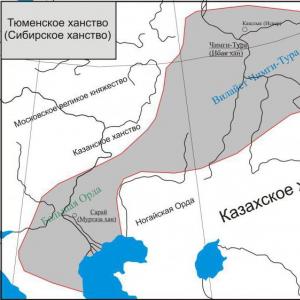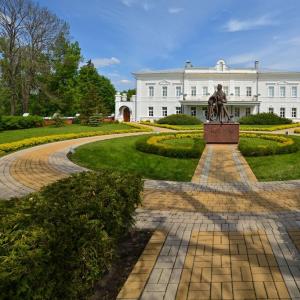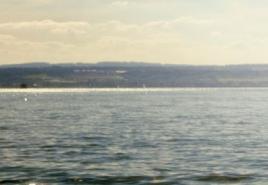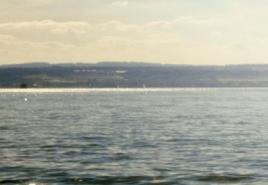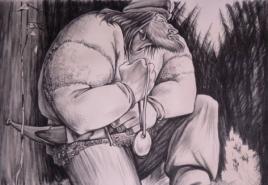Interesting facts and puzzles about chemical elements. The most interesting fact about chemistry
The Vanishing Spoon is a classic one, which is not so often found under the piles of all kinds of nonfiction scientific pop. This book could have been the classic Entertaining Chemistry in the Soviet years. Two layers are skillfully mixed in it. The first is a fun, inspiringly written and scientifically based collection chemical facts for curious high school students who want to go beyond the textbook, but just as interesting to forget school curriculum adults, including the humanities, who are guarded by numbers and formulas. The second is the history of science, written as if between times. Every now and then various scientists, Nobel Prize winners appear on the pages - a place was found here for almost all great chemists (and many physicists), and disparate stories add up to a common picture.
20 surprising facts about chemical elements
Helium (He, No. 2) as an eternal battery
If mercury is cooled in liquid helium to –268 degrees, then this system becomes an ideal conductor. This means that if it was possible to maintain such a temperature of helium in the microcircuits of gadgets, then their batteries would completely stop discharging. And if you lower the temperature by another 2 degrees, helium acquires the property of superfluidity and gets rid of the force of gravity - it can flow upward and overflow through walls.
Antimony (Sb, no. 51) as a laxative
Ancient Egyptians used antimony as a cosmetic for their face. And in the Middle Ages, toxic antimony pills were swallowed as a laxative. They were considered so precious that they were sometimes removed from their own excrement to be reused. In some families, the reused antimony tablets were hereditary. Currently, strong acids are made from antimony, capable of burning glass.
Gallium (Ga, # 31) as instant spoon
Gallium is located two lines below aluminum and in its normal state is similar to the most abundant metal on earth. However, the peculiarity of gallium is that it melts at only 28 degrees. A popular joke among chemists is connected with this: guests are sometimes served with gallium spoons for tea, and then they are surprised when an ordinary-looking spoon dissolves in a cup of freshly brewed tea.
Iridium (Ir, no. 77) as a key to dinosaurs
Iridium is an element that helped scientists solve the riddle of the death of dinosaurs. It all began with the accidental discovery of this fact: in a narrow layer of limestone formed 65 million years ago, the iridium content is 600 times higher than its usual level. Iridium usually comes to the surface of the Earth only during volcanic eruptions, but in addition, it is found in large quantities in meteorites arriving on Earth. Since the open pattern can be traced throughout the Earth, scientists suggested that 65 million years ago the planet was covered for some reason by a cloud of iridium dust. The most likely reason for this is a collision with huge meteorite, which was confirmed by the subsequent discovery of a huge crater in the Yucatan.
Molybdenum (Mo, no. 42) as a weapon
Molybdenum is associated with the least known battles of the First World War. The barrel of the famous German gun "Big Bertha", which fired for many kilometers, was reinforced with molybdenum so that it would not bend from overheating after volleys. Molybdenum was scarce, and most of it was mined in a remote mine in the US state of Colorado. Upon learning of this, representatives of the American office of the German concern Krupp literally seized the mine with a fight, which few people paid attention to: times in the Wild West were still harsh - and such behavior was considered the norm. The allies realized themselves only at the end of the war, when they realized why the Germans needed Colorado molybdenum so much.
Tantalum (Ta, # 73) as a cause civil war
Tantalus became an indirect culprit of chaos and anarchy in the whole country. The fact is that until the 90s of the XX century, the demand for tantalum in the world market was minimal, but in just a few years it became gigantic - tantalum is used in every mobile phone. It so happened that this metal is distributed over the Earth extremely unevenly, almost its only source is the territory of the Democratic Republic of the Congo, but there is so much tantalum ore that any peasant can dig up it in a day on the river for an amount that will not earn in a year growing bread. As a result, a real tantalum fever began in the Congo, the inhabitants of the country abandoned their farms and rushed after tantalum - after this, famine began in the country, and power passed to the rival crime bosses, who took control of tantalum mining. The tantalum anarchy in Congo has killed millions since the mid-1990s.
Cobalt (Co, # 27) as a brake on the arms race
The isotope of cobalt, cobalt-60, formed during a nuclear reaction, is one of the longest radiation elements on earth. During the arms race, this stopped technologists from creating a cobalt bomb, since in the territory that will be hit by this bomb, not only all living things will die, but all forms of life will disappear for decades. Chemist Leo Szilard calculated that it would be enough to spray a gram of cobalt-60 on every square kilometer of the earth's surface for all of humanity to be destroyed.
Technetium (Tc, # 43) as an elusive element
The forty-third element has become the most elusive element in the periodic table. When the table first appeared, some cells in it remained empty - it was clear that there must be a certain element, but it was not possible to find it. Claims of the presence of the forty-third element appeared more often than any other, and they all turned out to be false: each time it was a mixture of other elements. It was truly discovered only by Italian chemists in the 30s, using new technology: not sifting ore down to the smallest particles, but nuclear fusion. This new approach explains its name.
Cadmium (Cd, # 48) as a Japanese phobia
Cadmium is responsible for the terrible diseases of people who lived in the area of \u200b\u200bthe Japanese mine Kamioka. Precious metals have been mined in this place since ancient times, and in late XIX century began to produce cadmium. The element was poorly known to scientists, and the waste was simply thrown away, after which it penetrated into groundwater. After a while, the surrounding residents began to complain of terrible pain. The cadmium that got into the body literally crushed their bones into powder. In Japan, such a strong fear of cadmium began that even decades after the outbreak of poisoning, the script for the movie Godzilla prescribed that the monster was killed using cadmium rockets.
Bismuth (Bi, # 83) as a rainbow crystal
Bismuth is a whitish-pinkish metal that burns with a blue flame and emits yellow smoke. It is one of the few substances that expands when frozen. Water has the same property, but among the elements this is the rarest case. If there is a bismuth sea on some planet, then bismuth ice floes can float (and not sink) on it. It should look luxurious: frozen bismuth forms unusual iridescent funnel-shaped crystals, a favorite adornment of geologists.
Copper (Cu, # 29) as an enemy of bacteria
Copper safe for humans is toxic and destructive to bacteria. If they encounter copper, they absorb its atoms, which disrupt the metabolism of these organisms and eventually kill them. That is why copper water pipes have become the easiest way to disinfect and dramatically improved public health in the cities where they were introduced, and doorknobs are often made of brass, which remains free of bacteria no matter how many unwashed hands touch it.
Nitrogen (N, # 7) as the invisible killer
The air we breathe is 4/5 nitrogen, and this gas can be more insidious than any toxic poison. The fact is that the human body, getting into pure nitrogen (such reservoirs, for example, are found in mining mines), does not understand that something is wrong. Nitrogen is colorless and odorless, it seems to a person that he continues to breathe - until he falls dead from suffocation due to the lack of oxygen.
Tellurium (Te, # 52) as a deodorant
Tellurium smells like garlic. More precisely, of course, the opposite is true. And with such force that if you pour a small pinch on your skin, you will not be able to get rid of the smell in any way for several weeks. Greetings to Vladimir Sorokin.
Iodine (I, no. 53) as a savior of newborns
Iodine is very toxic, but in the smallest quantities a person needs for normal development. That is why, along with fluoridation tap water (after which people began to live to old age with healthy teeth) one of the largest and simplest health protection measures undertaken by mankind was salt iodization. Thereafter, birth defects and mental retardation began to appear in a much smaller number of newborns.
Polonius (Po, no. 84) as a metaphor for the history of Poland
Radioactive polonium was discovered by Maria Skłodowska-Curie and named after her native Poland, divided at that time between three empires. She hoped it would inspire her countrymen to fight for independence. However, this option turned out to be quite unsuccessful. Curie also discovered radium, which has become a widely used element in industry. Polonium turned out to be almost useless, besides, it disintegrates so quickly that Curie's stinging colleagues saw in this a connection with the country after which it is named: Poland, which was constantly divided among its neighbors, looked as unstable as polonium. Thus, Curie's patriotic message turned upside down.
Europium (Eu, no. 63) as banknote protection
Europium, on the contrary, is named extremely aptly: it is it that is used in euro banknotes to protect against counterfeiters. It is very difficult to obtain europium, therefore the euro is considered the best protected currency - a counterfeit banknote will instantly be identified by a special device in any bank due to the absence of the glow emitted by europium atoms.
Tin (Sn, # 50) as powder
Tin has a rare property: at low temperatures, its crystal structure changes, and the solid metal turns into powder. This unaccounted for property ruined the expedition of Robert Scott, who lost the race to the South Pole to Rwald Amundsen in 1912. The kerosene canisters they left in the middle of the road were sealed with tin solder. The expedition expected to use this fuel on the way back. On the spot, however, Scott's men discovered that the canisters were empty: the solder crumbled into powder and the precious fuel leaked out. All members of the expedition died from frostbite before reaching the British base.
Lithium (Li, # 3) as a cure for mental disorders
One of the first elements on the table is an incredibly reactive metal. There have been cases when people’s pockets caught fire, when there was a short circuit between the lithium batteries lying in them and other metal objects, for example, keys. But even more interesting is the effect of lithium on humans. Without playing any role in the body by itself, lithium can very effectively affect the brain, "resetting" the biological clock. This property of lithium is effective in the treatment of manic-depressive psychosis and other mental illness - a person seems to leave the past behind and is ready to start from scratch, getting rid of the phantoms of his own psyche.
Cesium (Cs, # 55) as a universal watch
Thanks to cesium, terrestrial scientists were able to create a universal system for measuring time, reasonably reasoning that it is not very correct to tie the definition of a second to the time of a tiny planet's revolution around a tiny star on a galactic scale. Therefore, we took periods that are universal for any point in the galaxy, namely, events at the level of microparticles. The astronomical clock has been replaced by a much more accurate atomic clock. In this logic, a new definition of a second was found - it is not 1/86 400 of the time of the Earth's revolution around its axis, but the time during which an electron in the outer orbital of a cesium atom performs 9 192 631 770 oscillations. And no more hesitation.
Feynmaniy (# 137) as the most recent element
This element does not exist either in nature or in chemical laboratories... Scientists have not yet even reached the 120th elements, and synthesizing the 137th is not even a matter of the next decades. However, this hypothetical element appears in theoretical chemistry already now, because the periodic table should end on it. Feynmaniy will be the last - an element with a larger nucleus simply cannot exist, since in this case the electrons around it must rotate faster than the speed of light, which is impossible. At least that's what modern science thinks. The hypothetical Feynmania was named after the physicist Richard Feynman, who first pointed to this possible limit.
- Publisher Eksmo, Moscow, 2015
The achievements of this science surround a person everywhere: from medicines and non-stick pans to magically disappearing ink on checks. Chemistry is hard for schoolchildren - perhaps it is not interesting? Nothing like this! The article contains the most interesting facts about chemistry and chemists. Learn about the most famous Moscow ghost, how a grumpy wife helped invent rubber, and the main value of Iturup Island.
Dissolve and stir
Tsarskoe vodka is not a drink of monarchs, but a mixture consisting of a quarter of nitric and three-quarters of hydrochloric acids. This rich carrot-colored liquid dissolves even hard-to-etch metals such as gold and platinum.
Acid "Tsarskaya vodka"
In 1940, royal vodka saved the Nobel medals of two German physicists from destruction: James Frank and Max von Laue. The Nazis were forbidden to accept this award because Karl von Ossietzky, an implacable opponent of National Socialist ideas, had it. Chemists at the Copenhagen Niels Bohr Institute threw medals into a bottle of aqua regia and even put the container in a prominent place.
The awards disappeared without a trace. Abwehr employees walked by and did not notice anything. After the war, gold was recovered from acid and medals were re-cast.
Disappearing spoon
"There is no spoon," - said Neo from the movie "The Matrix", waiting for an appointment with the prophetess. But even he would be surprised if the prophetess served gallium cutlery for tea and biscuits.

You don't need a blast furnace to melt this metal. It is enough to warm it up to 28 degrees, and it will flow. Even in the hands of gallium melts like ice cream, let alone boiling water!
The glowing monk and the dog of the Baskervilles
The muzzle of the Baskervilles dog from the story was smeared with phosphorus for criminal purposes. And the Soviet academician Semyon Volfkovich, who zealously studied this element, simply neglected safety techniques. As a result, his suit and shoes were saturated with phosphorus gas.

Walking home through Moscow at night, Wolfkovich emitted a mystical glow. Behind the scientist, at a respectful distance, each time there were amazed people, whom the "luminous monk" inspired both horror and curiosity.
Chemistry and ghosts
The Canterville Ghost and the many ghosts that inhabit Hogwarts are not entirely fictional. Until now, thousands of inhabitants of ancient houses and castles complain about mournful voices and mysterious steps in the dark, cannot sleep properly and even sell mansions.

The culprit of the nightmares was found: it turned out to be carbon monoxide. The outdated design of heating in houses of the past centuries releases it into rooms in such quantities that it causes auditory and visual hallucinations.
Is it possible to walk on water
It is possible if it is not pure water, but a mixture of it with starch. If you pour such a starch slurry into a pool, it will behave like a liquid. But as soon as you hit it sharply on its surface or even jump on it, it instantly thickens under your feet, and then spreads again. A fast-running person literally makes a solid path for himself in the liquid.

The fact is that the viscosity of a starch suspension depends not only on temperature, but also on the use of force. Cream that thickens with whipping behaves in the same way. But ketchup, on the contrary, deigns to flow only after hitting the bottle.
Periodic system record holders
The created table of elements is the alpha and omega of chemical science. There are many interesting things in it, let's look for the most unusual specimens in its cells:
- astatine is the rarest element found in nature: it is less than 1 g on the entire planet;
- rhenium is the rarest metal: 2,000 tons of ore are processed to produce 1 kg of rhenium; a deposit of this metal was discovered on the island of Iturup, which, among others, the Japanese dispute against Russia;

- californium - the high cost of this radioactive element has no equal: for 1 g of the substance you will have to pay $ 27 million;
- tungsten is the record holder for refractoriness: the temperature for its melting has to be raised above 3400 degrees;

- gold is a champion in malleability: a jeweler will draw a wire over 2 km long from 1 g of gold;
- nitrogen - the atmosphere is 78% nitrogen, while it is not used by any living organism, except for nitrogen-fixing bacteria;
- hydrogen - The universe belongs to hydrogen, which makes up 90% of it.
How the broken flask served the aircraft industry
French artist and chemist Edouard Benedictus in 1903 became the author of an invention that saved more than one life. On that day, he was conducting experiments with nitrocellulose and inadvertently dropped the flask. The glass cracked, but the bottle retained its shape. However, Benedictus was so annoyed that he simply threw it away.
In the evening, the scientist witnessed a car accident. The windshield, shattered by sharp fragments, disfigured the face of the surviving driver. And a broken flask appeared before the chemist's eyes ... It was carefully removed from the trash can and served science. This is how humanity got triplex - a material for glass vehicle, glass awnings and doors.
Grumpy wife and the birth of rubber
For many years, the American chemist Charles Goodyear tried to improve the properties of rubber by mixing it with various substances. The scientist's wife was dissatisfied with his work, since the invention did not bring money, and the stench in the house was decent. Goodyear was nervous, began to hide his experiments from his wife, but did not lose hope.

Once he mixed rubber with sulfur, but again nothing came of this venture. Hearing Mrs. Goodyear's footsteps, the scientist threw the mixture on the hot coals of the stove, trying to pretend that he was not doing anything like that. After listening to his wife's next notation and waiting for her to leave, the inventor took out of the stove exactly what he had wanted to see for many years - vulcanized rubber.
The art of naming
The tiny Swedish town of Ytterby is mentioned four times in periodic system... The names of the elements ytterbium, yttrium, erbium and terbium are derived from this toponym. All of them are found in the composition of an unusually heavy mineral that is mined in the vicinity of the town.

Miners from Norway still worship the mountain spirit Kobold, in whose power to fill mines or let people go alive. During the smelting of silver ores in former times, poisoning often occurred, which was also attributed to the harmfulness of the mountain spirit. The metal extracted from this ore was named cobalt in his honor, although arsenic oxide was to blame for the poisoning.

The resounding name "Amkar" of the Perm football club misleads everyone who is not familiar with the history of its creation. But this name, like a charade, consists of the first syllables included in the words "ammonia" and "carbamide". The explanation is simple: the company that created the club produces mineral fertilizers.
Small additive - very different properties
The German mortar "Big Bertha", created to destroy forts and fortresses, had a serious drawback - the legendary Krupp steel of the barrel was deformed from overheating. To remedy the situation, it was required to alloy the steel with molybdenum. The largest field at that time was discovered in the US state of Colorado. By cunning, persuasion and even, as they say, almost by raider seizure, the path of molybdenum was paved to Germany.
 German mortar "Big Bertha"
German mortar "Big Bertha" The Lego constructor is one of the favorite children's toys. And the smaller his details, the more interesting it is to mess with him. However, there is a danger that, having played too much, the child will swallow the constructor element. The creators of the game thought about this and added harmless barium sulfate to the plastic. Now the swallowed part is detected using X-ray.
Chemists joke
Most scientists are so tired of the amateurish horror stories about GMOs that in response chemists began to send out calls for a complete and irrevocable ban of dihydrogen monoxide. They write that this dangerous compound leads to corrosion of metals and damage to most other materials, is part of acid rain and discharges from enterprises. A person, in whose body dihydrogen monoxide enters, inevitably dies, sometimes even after a minute.

In 2007, it came to a real curiosity: having received from voters an angry description of a terrible poison, which is commonly added to food, a New Zealand MP asked the government to completely ban such "chemistry". But it was about water.
Chemistry is our life. We ourselves are made up of "dihydrogen monoxide" and tens of thousands of other substances that constantly interact with each other, giving rise to new compounds. And how many more wonderful discoveries and inventions await enthusiastic people in burnt robes - we will find out when we start using them.
Chemistry is a familiar school subject. Everyone liked to observe the reaction of the reagents. But few people know interesting Facts about chemistry, which we will talk about in this article.
- 1. Modern passenger aircraft use 50 to 75 tons of oxygen during a nine-hour flight. The same amount of this substance is produced by 25,000-50,000 hectares of forest in the process of photosynthesis.
- 2. One liter sea \u200b\u200bwater contains 25 grams of salt.
- 3. Hydrogen atoms are so small that if 100 million of them are placed in a chain one after another, the length is only one centimeter.
- 4. One ton of water in the World Ocean contains 7 milligrams of gold. The total amount of this precious metal in the waters of the oceans is 10 billion tons.
- 5. The human body contains approximately 65-75% water. It is used by organ systems to transport nutrients, regulate temperature, and dissolve nutrients.
- 6. Interesting facts about chemistry relate to our planet Earth. For example, over the past 5 centuries, its mass has increased by a billion tons. Space substances have added such weight.
- 7. The walls of a soap bubble are perhaps the thinnest matter that a person can see with the naked eye. For example, tissue paper or hair is several thousand times thicker.
- 8. The bubble burst speed is 0.001 seconds. The speed of a nuclear reaction is 0.000 000 000 000 000 001 seconds.
- 9. Iron, a very hard and durable material in its normal state, becomes gaseous at a temperature of 5 thousand degrees Celsius.
- 10. In just a minute, the Sun generates more energy than our planet spends in a whole year. But we are not using it fully. 19% of the solar energy is absorbed by the atmosphere, 34% returns to space, and only 47% reaches the Earth.
- 11. Oddly enough, but granite conducts sound better than air. So, if there were a granite wall (solid) between people, they would hear sounds at a distance of one kilometer. IN ordinary life in such conditions, the sound travels only a hundred meters.
- 12. Swedish scientist Karl Schelle holds the record for the number of discovered chemical elements. He has chlorine, fluorine, barium, tungsten, oxygen, manganese, and molybdenum on his account.
- The second place was shared by the Swedes Jacob Berzelius, Karl Monsander, the Englishman Humphry Davy and the Frenchman Paul Lecoq de Boisabordan. They own the discovery of a quarter of all known modern science elements (that is, 4 each).
- 13. The largest nugget of platinum is the so-called "Ural Giant". Its weight is 7 kilograms and 860.5 grams. This giant is kept in the Diamond Fund of the Moscow Kremlin.
- 14. September 16 since 1994 - International Day for the Preservation of the Ozone Layer, according to the decree of the UN General Assembly.
- 15. Carbon dioxide, which is widely used to create modern carbonated drinks, was discovered by the English scientist Joseph Priestley back in 1767. Then Priestley became interested in the bubbles formed during the fermentation of beer.
- 16. Dancing squid - this is the name of an amazing dish in Japan. The freshly caught and killed squid is placed in a bowl of rice and poured with soy sauce in front of the client. When interacting with sodium, which is contained in soy sauce, the nerve endings of even killed squid begin to react. As a result, such chemical reaction the mollusk begins to "dance" right on the plate.
- 17. Skatole is an organic compound that is responsible for the characteristic odor of feces. An interesting fact is that in large doses, this substance has a pleasant floral aroma, which is used in food Industry and perfumery.
You will learn interesting facts about the discovery of chemical elements in this article.
Interesting facts about the discovery of chemical elements
Most of the chemical elements known in nature were discovered by scientists from Sweden, England, France and Germany
The record holder among the "hunters" for chemical elements can be considered the Swedish chemist K. Scheele - he discovered and proved the existence of 6 chemical elements: fluorine, chlorine, manganese, molybdenum, barium, tungsten.
To the achievements in the finds of chemical elements of this scientist, one can also add the seventh element - oxygen, but the honor of the discovery of which he officially shares with the English scientist J. Priestley.
The second place in the discovery of new elements belongs to V. Ramzai - an English or, more precisely, a Scottish scientist: he discovered argon, helium, krypton, neon, xenon.
In 1985, a group of American and British researchers discovered molecular compounds from carbon, which strongly resemble a soccer ball in their shape. They wanted to name the discovery in honor of him, but the scientists did not agree on which term to use - football or soccer (the term of football in the USA). As a result, the compound was named fullerenes in honor of the architect Fuller, who invented a geodesic dome composed of tetrahedrons.
The French chemist, pharmacist and physician Nicolas Lemery (1645-1715) once observed something similar to a volcano, when he mixed 2 g of iron filings and 2 g of powdered sulfur in an iron cup and touched it with a red-hot glass rod. After a while, black particles began to fly out of the prepared mixture, and it itself, having greatly increased in volume, became so hot that it began to glow. The separation of gaseous fluorine from fluorine-containing substances has proven to be one of the most difficult experimental problems. Fluorine is extremely reactive; moreover, often its interaction with other substances occurs with ignition and explosion.
Iodine was discovered in 1811 by the French chemist B. Courtois. There is such a version of the discovery of iodine. According to it, the culprit of Courtois's discovery was his beloved cat: he lay on the chemist's shoulder when he worked in the laboratory. Wanting to have fun, the cat jumped on the table and pushed the vessels that were nearby onto the floor. One of them contained an alcoholic solution of seaweed ash, and the other contained sulphuric acid... After mixing the liquids, a cloud of blue-violet vapor appeared, which was nothing more than iodine.
In 1898, Marie and Pierre Curie announced the discovery of two new radioactive elements - radium and polonium... But they failed to isolate any of these elements to provide conclusive evidence. The couple began the hard work: it was necessary to extract new elements from uranium ore. It took them 4 years. At that time, the harmful effects of radiation on the body were not yet known, and tons of radioactive ore had to be processed. In 1902 they succeeded extract a tenth gram of radium chloride from several tons of ore, and in 1903 Maria presented her doctoral dissertation on the topic "Investigation of radioactive substances" at the Sorbonne. In December 1903 Becquerel and the Curies received Nobel Prize.
Bromine discovery
French chemist Antoine Jerome Balard discovered bromine as a laboratory assistant. The brine of the salt marsh contained sodium bromide. During the experiment, Balar acted on the brine with chlorine. As a result of the reaction of interaction, the solution turned yellow. After a while, Balar isolated a dark brown liquid and named it murid. Later, Gay-Lussac called the new substance bromine. And Balar in 1844 became a member of the Paris Academy of Sciences. Before the discovery of bromine, Balar was almost unknown in scientific circles. After the discovery of bromine, Balard became head of the department of chemistry at the French College. As the French chemist Charles Gerard said: “It was not Balard who discovered bromine, but bromine Balard discovered!”
Chlorine discovery
Interestingly, chlorine was discovered by a man who at that time was just a pharmacist. This man's name was Karl Wilhelm Scheele. He had an amazing intuition. The famous French organic chemist said that Scheele makes a discovery every time he touches something. Scheele's experience was very simple. He mixed black magnesia and a solution of muric acid in a special apparatus retort. I attached a bubble without air to the neck of the retort and warmed it up. Soon, a yellow-green gas with a pungent odor appeared in the bubble. So chlorine was discovered.
MnO2 + 4HCl \u003d Cl2 + MnCl2 + 2H2O
For the discovery of chlorine, Scheele was awarded the title of a member of the Stockholm Academy of Sciences, although before that he was not a scientist. Scheele was then only 32 years old. But chlorine got its name only in 1812. The author of this name was the French chemist Gay-Lussac.
Football club "Amkar" from Perm got its name from the reduction of two chemical substances - ammonia and urea, as they were the main products of OJSC Mineral Fertilizers, which created the club.
If the viscosity of a liquid depends only on its nature and temperature, as, for example, in water, such a liquid is called Newtonian. If the viscosity also depends on the velocity gradient, it is called non-Newtonian. Such liquids, upon sudden application of force, behave like solid bodies... An example is ketchup in a bottle, which will not flow until you shake the bottle. Another example is a suspension of cornstarch in water. If you pour it into a large container, you can literally walk on it if you move your legs quickly and apply sufficient force to each blow.
Ernest Rutherford was engaged in research mainly in the field of physics and once said that "all sciences can be divided into two groups - physics and stamp collecting." However, the Nobel Prize was awarded to him in chemistry, which came as a surprise to both him and other scientists. Subsequently, he noticed that of all the transformations that he was able to observe, "the most unexpected was his own transformation from a physicist to a chemist."
Since the 1990s, there have been frequent calls on websites and in mailing lists to ban the use of dihydrogen monoxide. They list the numerous hazards that this substance causes: it is the main component of acid rain, accelerates the corrosion of metals, can cause a short circuit, etc. Despite the danger, the substance is actively used as an industrial solvent, additives to food products, atomic stations, and enterprises dump it in huge quantities into rivers and seas. This joke - after all, dihydrogen monoxide is nothing more than water - should teach critical perception of information. In 2007, a New Zealand MP bought it. He received a similar letter from a voter, and he forwarded it to the government, demanding a ban on the dangerous chemical.
Strawberry aldehyde from the point of view of organic chemistry is not an aldehyde, but an ethyl ether. Also, this substance is not contained in strawberries, but only resembles it with its smell. The substance got its name in the 19th century, when chemical analysis was not yet very accurate.
Platinum literally means "silver" in Spanish. This scornful name given to this metal by the conquistadors is explained by the exceptional refractoriness of platinum, which did not lend itself to melting, was not used for a long time and was valued half as much as silver. Now on world exchanges, platinum is about 100 times more expensive than silver.
The smell of wet earth that we smell after the rain is organic matter geosmin, which is produced by cyanobacteria and actinobacteria living on the earth's surface.
Many chemical elements are named after countries or other geographic features. Four elements at once - yttrium, ytterbium, terbium and erbium - were named after the Swedish village of Ytterby, near which a large deposit of rare earth metals was discovered.
When roasting arsenic-containing cobalt minerals, volatile poisonous arsenic oxide is released. The ore containing these minerals received the name of the mountain spirit Kobold from the miners. The ancient Norwegians attributed the poisoning of the smelters during the smelting of silver to the tricks of this evil spirit. In honor of him, the metal itself was named cobalt.
Canaries are very sensitive to methane in the air. This feature was used at one time by miners, who, going underground, took with them a cage with a canary. If the singing was not heard for a long time, then it was necessary to go upstairs as quickly as possible.
Antibiotics were discovered by accident. Alexander Fleming left the test tube with staphylococcus bacteria unattended for several days. A colony of molds grew in it and began to destroy bacteria, and then Fleming isolated the active substance - penicillin.
Vultures-turkeys have a very sharp scent, especially well they smell ethanethiol - a gas that is released during rotting of animal corpses. Artificially produced ethanethiol is added to natural gas, which itself is odorless, so that we can smell gas leaking from an uncovered burner. In sparsely populated areas of the United States, line engineers sometimes detect leaks on main pipelines precisely by circling turkey vultures above them, attracted by their familiar smell.
American Charles Goodyear accidentally discovered a recipe for making rubber that does not soften in the heat and does not become fragile in the cold. He mistakenly heated a mixture of rubber and sulfur on a kitchen stove (according to another version, he left a rubber sample by the stove). This process is called vulcanization.

